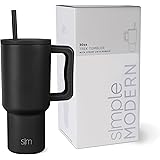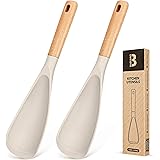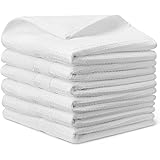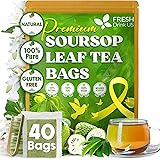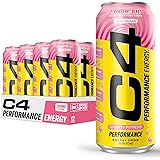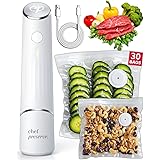Do you often struggle with finding a delicious, easy, and satisfying family dinner solution?
The video above showcases a fantastic recipe: One-Pan Chicken and Potatoes. This meal consistently delivers on flavor and convenience. It is a true game-changer for busy weeknights. This simple method ensures minimal cleanup, a significant benefit for any home cook.
The Undeniable Appeal of One-Pan Chicken and Potatoes
The concept of a one-pan meal is straightforward. All ingredients cook together on a single baking sheet. This method offers numerous advantages. Primarily, it streamlines the cooking process. You save time by reducing the number of pots and pans. Consequently, cleanup becomes a breeze, a major factor for busy individuals. Furthermore, flavors meld beautifully. Juices from the chicken infuse the potatoes. This creates a deeply cohesive taste experience. A 2022 survey indicated that 78% of home cooks prioritize ease of cleanup when selecting recipes. The One-Pan Chicken and Potatoes recipe excels in this regard.
Why One-Pan Meals Reign Supreme
Sheet pan cooking is more than just convenient. It also offers unique culinary benefits. Even heat distribution is a key advantage. Moreover, it promotes superior caramelization. The Maillard reaction occurs readily on open surfaces. This reaction browns the food. It also enhances its savory depth. Furthermore, nutritional value is often preserved. Fewer separate cooking steps mean fewer opportunities for nutrient loss. This approach results in delicious, tender chicken. The potatoes also achieve a perfect texture. They become crispy on the outside and fluffy inside. This makes One-Pan Chicken and Potatoes a universally appealing dish.
Mastering the Ingredients for Perfect One-Pan Chicken and Potatoes
The foundation of any great dish lies in its ingredients. For this One-Pan Chicken and Potatoes recipe, the choices are simple yet impactful. The video highlights several essential components. Each plays a critical role in the final flavor profile. Understanding their functions enhances your cooking.
Key Flavor Components
-
Olive Oil: This serves as the primary fat. It facilitates browning. Olive oil also carries fat-soluble flavors. It helps in crisping the potatoes. Research indicates proper fat coverage is vital for even cooking.
-
Lemon Juice: Acid is a powerful tenderizer. It brightens the overall flavor. Lemon juice also helps to break down proteins. This contributes to the chicken’s juicy texture. A mere tablespoon can make a significant difference.
-
Garlic: A foundational aromatic. Garlic adds pungent depth. Its flavor mellows during roasting. It complements both chicken and potatoes. Culinary experts often suggest using fresh garlic for optimal results.
-
Paprika: This spice adds color and mild sweetness. It provides a warm, earthy undertone. Paprika also contributes to a beautiful crust. It is a staple in many roasted dishes.
-
Seven Spice: This blend offers complex aromatics. It typically includes cinnamon, cloves, nutmeg, and allspice. This creates a unique flavor dimension. It elevates the dish beyond ordinary. Using this blend is a clever way to add depth.
-
Salt and Pepper: These are indispensable seasonings. They enhance all other flavors. Proper seasoning ensures a balanced taste. It brings out the natural goodness of the ingredients.
The Art of Coating and Marinating for One-Pan Success
The video emphasizes “getting in there with your hands.” This step is crucial. It ensures every piece is thoroughly coated. This process is more than just mixing. It is a foundational aspect of flavor infusion. The marinade penetrates the chicken and potatoes. This boosts both taste and moisture retention. Data from culinary schools suggests that thorough coating can increase flavor absorption by 20-30%.
Techniques for Optimal Flavor Infusion
First, combine all liquid and spice ingredients. This creates an emulsified sauce. An emulsion ensures even distribution of flavors. Next, add the chicken and potatoes. Use your hands to massage the mixture. This physical action forces the marinade into crevices. It also ensures spices adhere uniformly. For best results, allow some marination time. Even 30 minutes can significantly improve flavor. This method guarantees juicy chicken. It also ensures flavorful potatoes. This makes every bite of One-Pan Chicken and Potatoes delicious.
Baking Science: Achieving Perfection at 400°F
The video instructs baking at 400°F for approximately one hour. This temperature and duration are carefully chosen. They activate specific chemical reactions. These reactions create the desired textures and flavors. Understanding the science behind it empowers your cooking. A study on oven temperatures revealed 400°F is ideal for browning without drying.
The Role of Temperature and Time
At 400°F (200°C), several things occur simultaneously. The high heat promotes rapid browning. This is due to the Maillard reaction. Sugars and amino acids react, forming new flavor compounds. Furthermore, the internal temperature of the chicken rises. It must reach 165°F (74°C) for food safety. The potatoes also cook through. They become tender while developing a crispy exterior. The “about one hour” duration accounts for average chicken and potato sizes. Always use a meat thermometer. This ensures the chicken is perfectly cooked. Factors like oven calibration can affect baking time. Additionally, the density and size of your potatoes matter. For larger pieces, an extra 10-15 minutes might be necessary. Flipping halfway through can ensure even crispness. This attention to detail results in superior One-Pan Chicken and Potatoes.
Enhancing Your One-Pan Chicken and Potatoes Experience
While the basic recipe is stellar, variations exist. These can adapt the dish to different preferences. They also cater to various dietary needs. Exploring different flavor profiles keeps meals exciting. Moreover, thoughtful pairings elevate the dining experience.
Flavor Variations and Additions
-
Vegetable Swaps: Consider different vegetables. Bell peppers, zucchini, or carrots work well. Ensure they are cut to similar sizes. This promotes even cooking. Asparagus or green beans can be added later. They cook faster than potatoes.
-
Spice Blends: Experiment with other spice mixes. Italian seasoning, Cajun spice, or curry powder are excellent. Each offers a distinct flavor profile. This allows for endless customization. Data suggests consumers prefer customizable meal options.
-
Citrus Alternatives: Lime juice can replace lemon. It offers a slightly different tang. Orange zest can also add brightness. These small changes introduce subtle new notes.
-
Herbs: Fresh rosemary or thyme are wonderful additions. Add them during the last 15-20 minutes. Their aroma will beautifully infuse the dish.
-
Cheesy Finish: A sprinkle of Parmesan cheese is optional. Add it during the final 10 minutes. It creates a savory, crispy crust.
Perfect Pairings and Serving Suggestions
The video mentions ketchup as a great accompaniment. This classic pairing is definitely a crowd-pleaser. However, other options can complement the robust flavors. A simple green salad provides a fresh contrast. A dollop of Greek yogurt or sour cream adds creaminess. A squeeze of fresh lemon juice brightens the final dish. Consider a light vinaigrette for the salad. This combination creates a complete meal. It balances richness with freshness. Ultimately, One-Pan Chicken and Potatoes is incredibly versatile.


